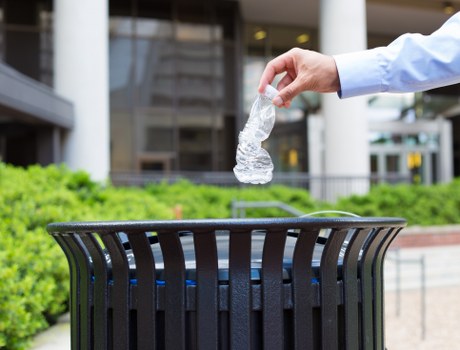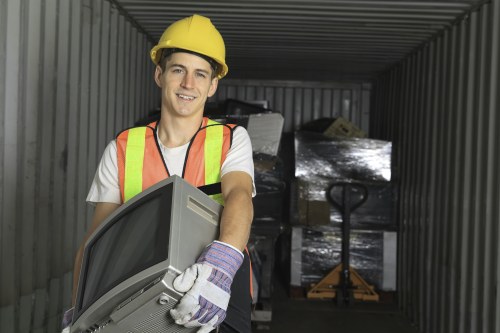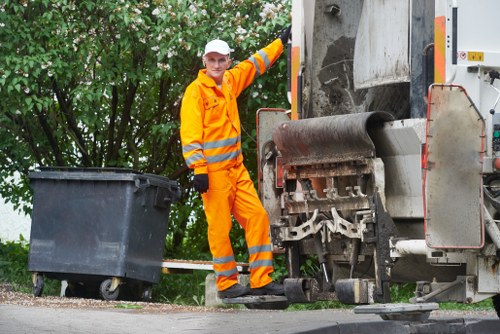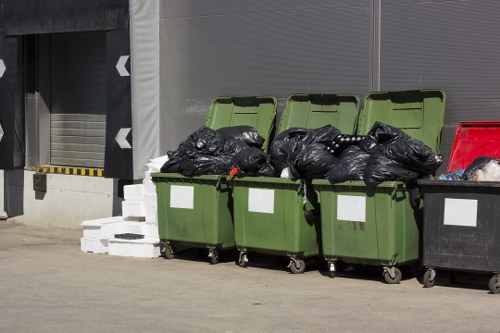Construction Waste Clearance in Kenton

Construction projects, whether residential, commercial, or industrial, inevitably generate a significant amount of waste. Proper Construction Waste Clearance in Kenton is essential not only for maintaining a clean and safe work environment but also for ensuring compliance with local regulations and promoting environmental sustainability.
In Kenton, the demand for efficient waste clearance services has been on the rise, reflecting the area's growth and development. Understanding the processes, benefits, and best practices associated with construction waste clearance can help property owners, contractors, and developers manage their projects more effectively.
This comprehensive guide delves into the various aspects of construction waste clearance in Kenton, providing valuable insights and actionable tips to streamline your construction projects.

Why Construction Waste Clearance is Crucial
Effective waste management is a critical component of any construction project. Here are some key reasons why construction waste clearance in Kenton is indispensable:
- Safety: Accumulated waste can create hazardous conditions, increasing the risk of accidents and injuries on-site.
- Compliance: Local regulations in Kenton mandate proper disposal of construction waste to prevent environmental contamination.
- Cost-Efficiency: Timely waste clearance can reduce storage costs and prevent project delays.
- Environmental Impact: Responsible waste management minimizes the environmental footprint of construction activities.
By prioritizing waste clearance, construction teams can ensure their projects proceed smoothly while adhering to safety and environmental standards.

Types of Construction Waste
Construction waste encompasses a variety of materials, each requiring specific handling and disposal methods. Common types include:
- Concrete and Masonry: These materials are often recycled and repurposed in new construction projects.
- Wood: Untreated wood can be recycled, while treated or contaminated wood may require special disposal.
- Metals: Metals like steel and aluminum are highly recyclable and should be separated from other waste.
- Plastics: Certain plastics can be recycled, but others may need to be disposed of in designated facilities.
- Drywall: Drywall waste must be handled carefully to prevent environmental contamination.
Understanding the types of waste generated helps in planning efficient clearance and recycling strategies.

Steps in the Construction Waste Clearance Process
Implementing a structured waste clearance process ensures efficiency and compliance. The typical steps involved are:
- Assessment: Evaluate the amount and types of waste generated to determine the appropriate disposal methods.
- Segregation: Separate recyclable materials from non-recyclable waste to facilitate proper handling.
- Collection: Use suitable containers and equipment to collect and transport waste safely.
- Transportation: Move the waste to designated facilities, ensuring compliance with local regulations.
- Disposal and Recycling: Properly dispose of non-recyclable materials and recycle where possible.
Following these steps can significantly enhance the efficiency of construction waste clearance in Kenton.

Choosing the Right Waste Clearance Service in Kenton
Selecting a reliable waste clearance service is crucial for the success of your construction project. Consider the following factors when choosing a provider:
- Experience: Look for companies with a proven track record in handling construction waste clearance.
- Compliance: Ensure the service provider adheres to local regulations and environmental standards.
- Comprehensive Services: Opt for companies that offer a full range of services, including assessment, segregation, and recycling.
- Cost-Effectiveness: Compare pricing structures to find a service that fits your budget without compromising quality.
- Customer Reviews: Check testimonials and reviews to gauge the reliability and professionalism of the service provider.
By carefully evaluating these factors, you can select a waste clearance service that meets your project's specific needs.

Environmental Benefits of Proper Waste Clearance
Adhering to proper waste clearance practices offers numerous environmental benefits:
- Resource Conservation: Recycling materials like metal, wood, and concrete reduces the need for new resources.
- Reduced Landfill Use: Proper segregation and recycling minimize the volume of waste sent to landfills.
- Pollution Prevention: Safe disposal of hazardous materials prevents soil and water contamination.
- Energy Savings: Recycling often consumes less energy compared to producing new materials from raw resources.
- Carbon Footprint Reduction: Efficient waste management practices contribute to lower greenhouse gas emissions.
Promoting Sustainability
Implementing sustainable waste clearance practices aligns with global efforts to protect the environment. Construction companies in Kenton can play a pivotal role in fostering a greener future by prioritizing recycling and responsible waste management.

Regulations Governing Construction Waste Clearance in Kenton
Compliance with local regulations is essential to avoid legal repercussions and ensure environmentally responsible practices. Key regulations include:
- Waste Management Licensing: Companies must obtain the necessary licenses to handle and dispose of construction waste.
- Segregation Guidelines: Specific rules govern how different types of waste should be separated and processed.
- Reporting Requirements: Detailed records of waste generation, segregation, and disposal must be maintained.
- Recycling Mandates: Certain materials must be recycled or reused where possible.
Staying informed about these regulations helps construction projects in Kenton avoid fines and contribute positively to environmental conservation.

Innovations in Construction Waste Management
The construction industry is continually evolving, with new technologies and methods enhancing waste management efficiency:
- Advanced Recycling Techniques: Innovations in recycling processes enable the recovery of more materials from construction waste.
- Waste Tracking Systems: Digital tools help monitor waste generation and disposal, ensuring compliance and optimizing processes.
- Modular Construction: Prefabricated components minimize on-site waste by reducing material excess and optimizing assembly.
- Green Building Practices: Incorporating sustainable materials and designs reduces overall waste production.
- Automated Sorting: Robotics and AI-driven systems improve the accuracy and efficiency of waste segregation.
Embracing these innovations can significantly enhance the effectiveness of construction waste clearance in Kenton.

Cost Implications of Construction Waste Clearance
Managing construction waste effectively can have significant cost implications for projects in Kenton:
- Direct Costs: Fees associated with waste collection, transportation, and disposal services.
- Indirect Costs: Potential fines for non-compliance and expenses related to project delays caused by insufficient waste management.
- Savings through Recycling: Recycling materials can offset some disposal costs and even generate additional revenue.
- Operational Efficiency: Streamlined waste clearance processes can reduce labor costs and improve overall project timelines.
- Long-Term Benefits: Sustainable practices enhance the reputation of construction firms, potentially leading to more business opportunities.
Investing in proper waste clearance not only mitigates costs but also promotes long-term sustainability and efficiency.

Best Practices for Construction Waste Clearance
Adopting best practices ensures effective and compliant construction waste clearance in Kenton.
1. Develop a Waste Management Plan
A comprehensive plan outlines the strategies for waste reduction, segregation, and disposal, providing clear guidelines for all project stakeholders.
2. Train Your Team
Educate workers on proper waste handling techniques and the importance of adhering to the waste management plan.
3. Use Appropriate Containers
Designate specific containers for different types of waste to facilitate efficient segregation and handling.
4. Regular Monitoring and Auditing
Consistently monitor waste generation and clearance processes to identify areas for improvement and ensure compliance with regulations.
5. Partner with Reputable Waste Clearance Services
Collaborate with experienced and reliable waste clearance providers to ensure efficient and compliant waste management.
Implementing these best practices enhances the effectiveness of construction waste clearance efforts, leading to smoother project execution and better environmental outcomes.

Recycling and Reusing Construction Materials
Recycling and reusing materials not only reduce waste but also conserve resources and minimize environmental impact. Commonly recycled materials include:
- Metals: Steel, aluminum, and copper can be melted down and repurposed for new construction.
- Wood: Reclaimed wood can be used in new projects, adding character and reducing the need for new timber.
- Concrete: Crushed concrete can serve as a base material for roads and other construction projects.
- Glass: Recycled glass can be used in various applications, including decorative elements and new glass products.
- Plastics: Certain plastics can be recycled into new building materials or products.
By prioritizing recycling and reuse, construction projects in Kenton can achieve sustainability goals while reducing waste disposal costs.

Sustainable Practices in Construction Waste Clearance
Incorporating sustainable practices into construction waste clearance promotes environmental stewardship and aligns with global sustainability goals. Key practices include:
- Minimizing Waste Production: Careful planning and precise material estimation reduce the amount of waste generated.
- Eco-Friendly Materials: Using recyclable and sustainable materials lessens the environmental impact of construction activities.
- Efficient Waste Sorting: Accurate segregation of waste streams enhances recycling effectiveness and reduces landfill reliance.
- Energy-Efficient Processes: Implementing energy-saving measures in waste management operations reduces the overall carbon footprint.
- Community Engagement: Collaborating with local communities fosters a culture of sustainability and responsible waste management.
Adopting these sustainable practices ensures that construction waste clearance efforts contribute positively to environmental conservation and community well-being.

The Role of Technology in Enhancing Waste Clearance
Technology plays a pivotal role in modernizing construction waste clearance, offering tools that enhance efficiency and accuracy. Key technological advancements include:
- Waste Management Software: Digital platforms help track waste generation, segregation, and disposal, providing valuable data for optimizing processes.
- Automated Sorting Systems: Robotics and artificial intelligence improve the precision and speed of waste segregation.
- Mobile Applications: Apps facilitate real-time communication and coordination among team members, ensuring timely waste clearance.
- Drones and Sensors: These technologies monitor waste levels and site conditions, enabling proactive waste management.
- Recycling Technologies: Advanced recycling processes increase the range of materials that can be recycled efficiently.
Leveraging these technological innovations can significantly enhance the effectiveness and sustainability of construction waste clearance in Kenton.

Case Studies: Successful Waste Clearance in Kenton
Examining real-world examples of successful construction waste clearance can provide valuable lessons and inspiration. Here are a few notable case studies from Kenton:
Project A: Residential Complex Development
In developing a large residential complex, the construction team partnered with a local waste clearance service to implement a robust waste management plan. By segregating materials on-site and utilizing advanced recycling techniques, the project achieved a 60% waste reduction, significantly cutting disposal costs and minimizing environmental impact.
Project B: Commercial Office Building
A commercial office building project in Kenton employed sustainable waste clearance practices, including the use of eco-friendly materials and efficient waste sorting. The result was a streamlined construction process with minimal waste, adherence to all regulatory requirements, and a strong reputation for environmental responsibility.
Project C: Industrial Facility Expansion
During the expansion of an industrial facility, the construction team faced challenges related to managing large volumes of construction waste. By integrating automated waste tracking systems and collaborating closely with a professional waste clearance provider, the project maintained compliance, optimized waste disposal, and completed ahead of schedule.
These case studies highlight the importance of strategic planning, collaboration with reputable waste clearance services, and the adoption of sustainable practices in achieving successful construction waste clearance.

Future Trends in Construction Waste Clearance
The landscape of construction waste clearance is continually evolving, with several emerging trends set to shape the future:
- Circular Economy Models: Emphasizing the reuse and recycling of materials to create a closed-loop system, reducing waste generation.
- Smart Waste Management: Integration of IoT devices and data analytics to enhance real-time monitoring and decision-making.
- Eco-Friendly Disposal Methods: Development of innovative disposal techniques that minimize environmental impact.
- Green Certifications: Increasing importance of sustainability certifications for construction projects, encouraging responsible waste management.
- Collaborative Platforms: Platforms facilitating collaboration between stakeholders to optimize waste clearance processes.
Adapting to Change
Staying abreast of these trends enables construction professionals in Kenton to adopt forward-thinking waste clearance strategies, ensuring continued efficiency, compliance, and environmental stewardship.

How to Get Started with Construction Waste Clearance
Initiating effective waste clearance for your construction project involves several key steps:
- Assess Your Needs: Determine the volume and types of waste your project will generate.
- Develop a Waste Management Plan: Outline strategies for waste reduction, segregation, and disposal.
- Select a Reliable Waste Clearance Service: Choose a provider with experience, compliance adherence, and comprehensive services.
- Implement Best Practices: Train your team, use appropriate containers, and maintain regular monitoring.
- Review and Optimize: Continuously assess your waste management processes and make necessary improvements.
By following these steps, you can establish a robust foundation for efficient construction waste clearance in Kenton, ensuring the success and sustainability of your projects.

Conclusion
Effective construction waste clearance in Kenton is a fundamental aspect of successful construction projects. It ensures safety, compliance, cost-efficiency, and environmental sustainability. By understanding the types of waste, adhering to local regulations, adopting best practices, and leveraging technological advancements, construction professionals can manage waste effectively and contribute to a greener future.
Partnering with experienced waste clearance services and staying informed about industry trends further enhances the efficiency and sustainability of your projects. Embrace responsible waste management practices to not only achieve project goals but also make a positive impact on the community and environment.
Contact us today to learn more about our comprehensive construction waste clearance services in Kenton and take the first step towards a more efficient and sustainable construction project.
Book Your Service Now
Don't let construction waste hinder your project's success. Book your construction waste clearance service now and ensure a clean, safe, and compliant worksite.